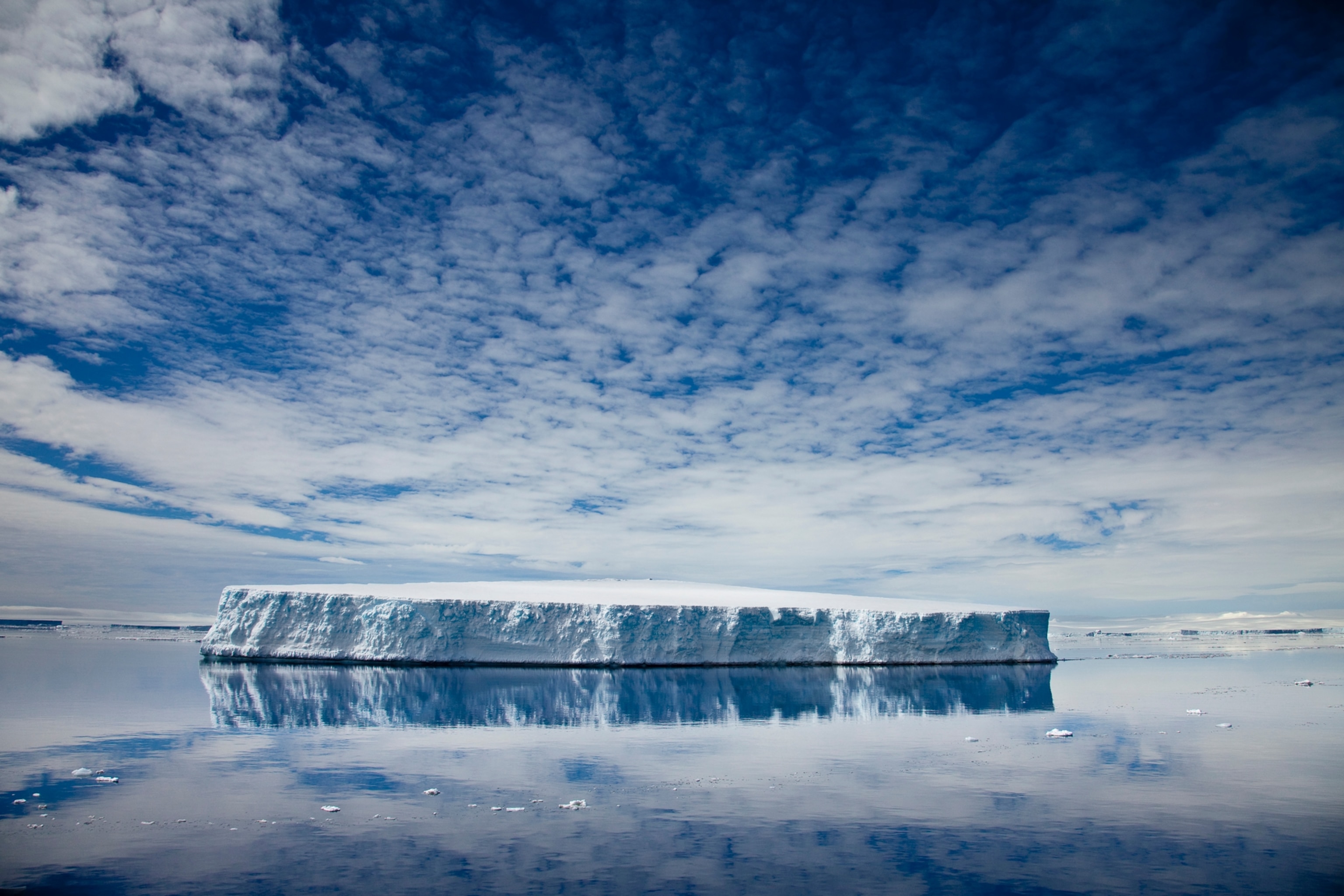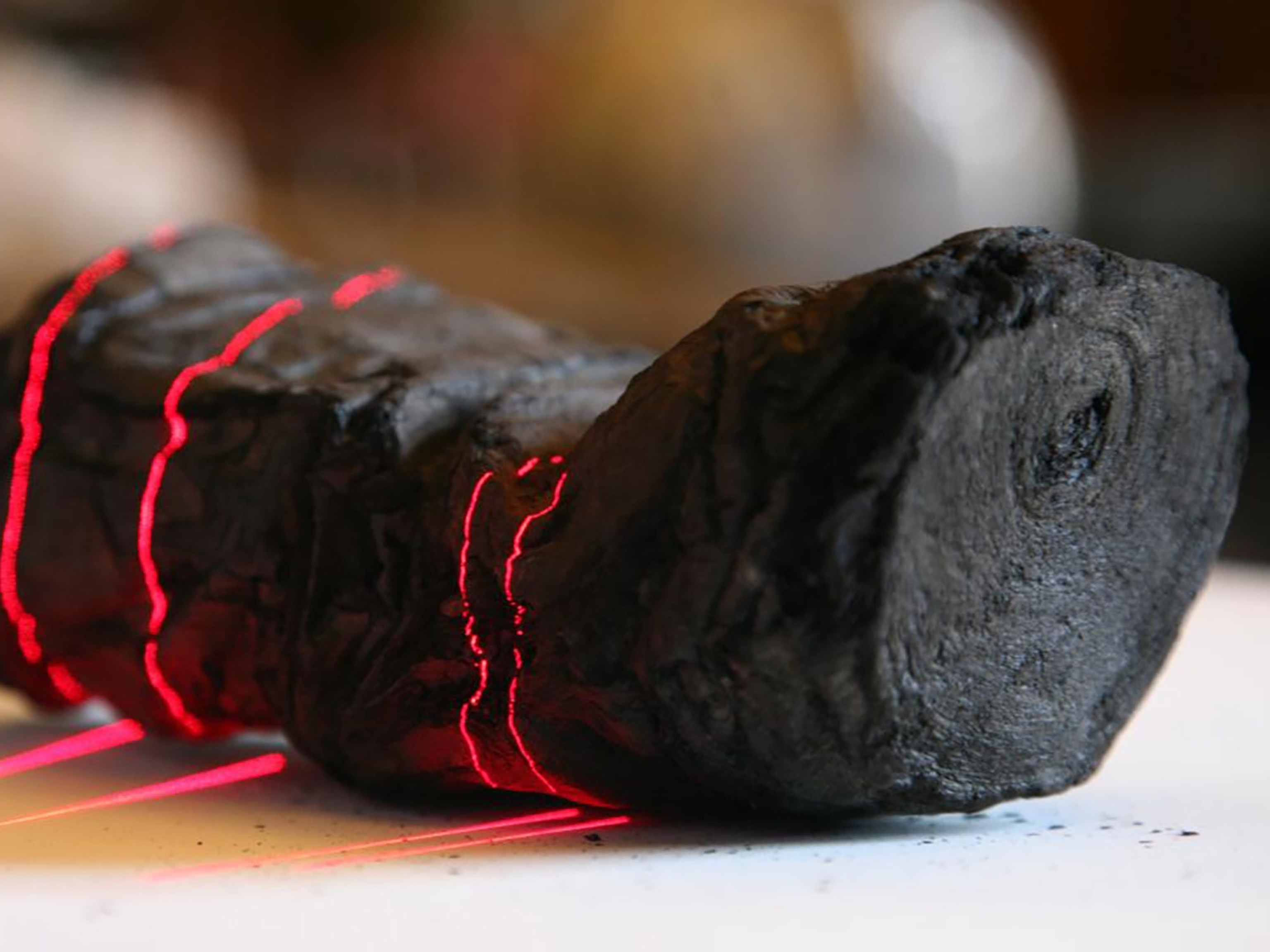
Watch and Listen to the Surprisingly Noisy Death of an Iceberg
Iceberg cracks can be louder than noises produced by supertankers, study says.
The birth of an iceberg can be violent. When they are sloughed off glaciers, these calving chunks of ice are accompanied by shotgun cracks of sound and crashing waves.
Once loose, icebergs drift out to sea, at the mercy of winds and ocean currents. But it turns out that icebergs might not all go quietly into the night.
In fact, the death of an iceberg is surprisingly loud, according to new research published in the July issue of the journal Oceanography. The amount of energy released during the 20-minute breakup of one of these floating islands of ice in Antarctica is equivalent to the noise produced by about 214 supertankers.
Although previous researchers have recorded the sounds icebergs make when calving or running aground, this is most likely the first time anyone's reported the sounds of an iceberg breaking up over open water, said study leader Bob Dziak, a geophysicist studying earthquakes and volcanoes at Oregon State University and the U.S. National Oceanic and Atmospheric Administration.
Dziak was originally in Antarctica to study underwater volcanoes. He and his team had set out underwater microphones in the Scotia Sea and Bransfield Strait—located between the Antarctic Peninsula and the southern tip of Argentina—to record the volcanoes' goings-on in 2007.
But when the researchers started going through the data, they soon realized that they had also recorded the sounds of iceberg A53a. (Related: "Antarctic's Pine Island Glacier Produces Giant Iceberg.")
Death Throes
The 37-mile-long (60-kilometer-long) iceberg emitted what sounded like tortured groans, shudders, and cracks as it ran aground, spun around, scraped along the seafloor, and then broke up over open water.
Watch and listen as an iceberg breaks up over open water and runs aground. The sound has been sped up so that we can hear it.
The noises as the iceberg broke apart—called an icequake—were so loud Dziak first thought he was listening to a volcano.
But when he pinpointed where the noises were coming from, a nearby iceberg—A53a—tipped him off to the true source of his acoustic haul.
"It surprised me how much energy was being released during these [breakup] events," Dziak said. "I didn't expect that." (Learn more about our noisy oceans in National Geographic magazine.)
Previous researchers have discovered that some of these iceberg sounds are so loud, underwater microphones at the Equator can pick them up. Erin Pettit, a glacier expert at the University of Alaska in Fairbanks who was not involved in the study, has also recorded similarly loud sounds produced by glaciers and icebergs in the Arctic.
"They can have a very wide impact on the ocean soundscape," Dziak explained. (Related: "'Singing' Iceberg Recorded in Antarctica.")
Noisy Seas
With increasing temperatures in areas of the Antarctic—including the Peninsula—melting ice and ice breakups could be making our seas even louder, Dziak said. (Read about "The Big Thaw" in National Geographic magazine.)
Many ocean animals use sound to hunt, find mates, breed, and avoid predators. How an increasingly noisy environment will impact them is difficult to know, he explained.
Dziak plans to extend his acoustic studies by cataloging the sounds produced by ice in Antarctica, including icebergs and sea ice.
He wants to know the locations of this acoustic cacophony and how the sounds change over time. So far, he's recorded 5,000 to 6,000 icequakes around the Antarctic Peninsula and the South Atlantic.
Follow Jane J. Lee on Twitter
YEAR-LONG ADVENTURE for every young explorer on your list
FREE limited-edition frog drawstring bag with every Nat Geo Kids Book Bundle subscription




